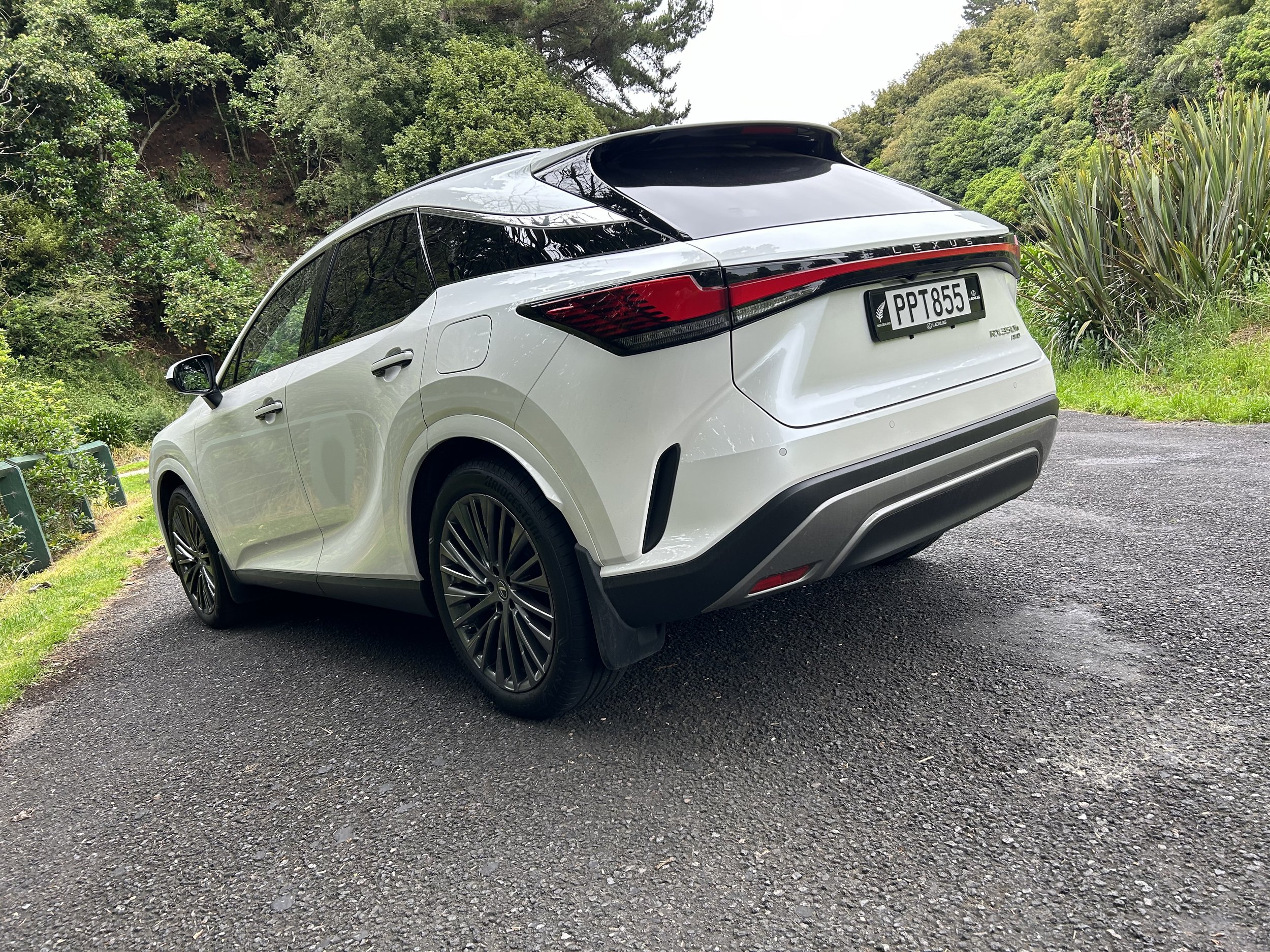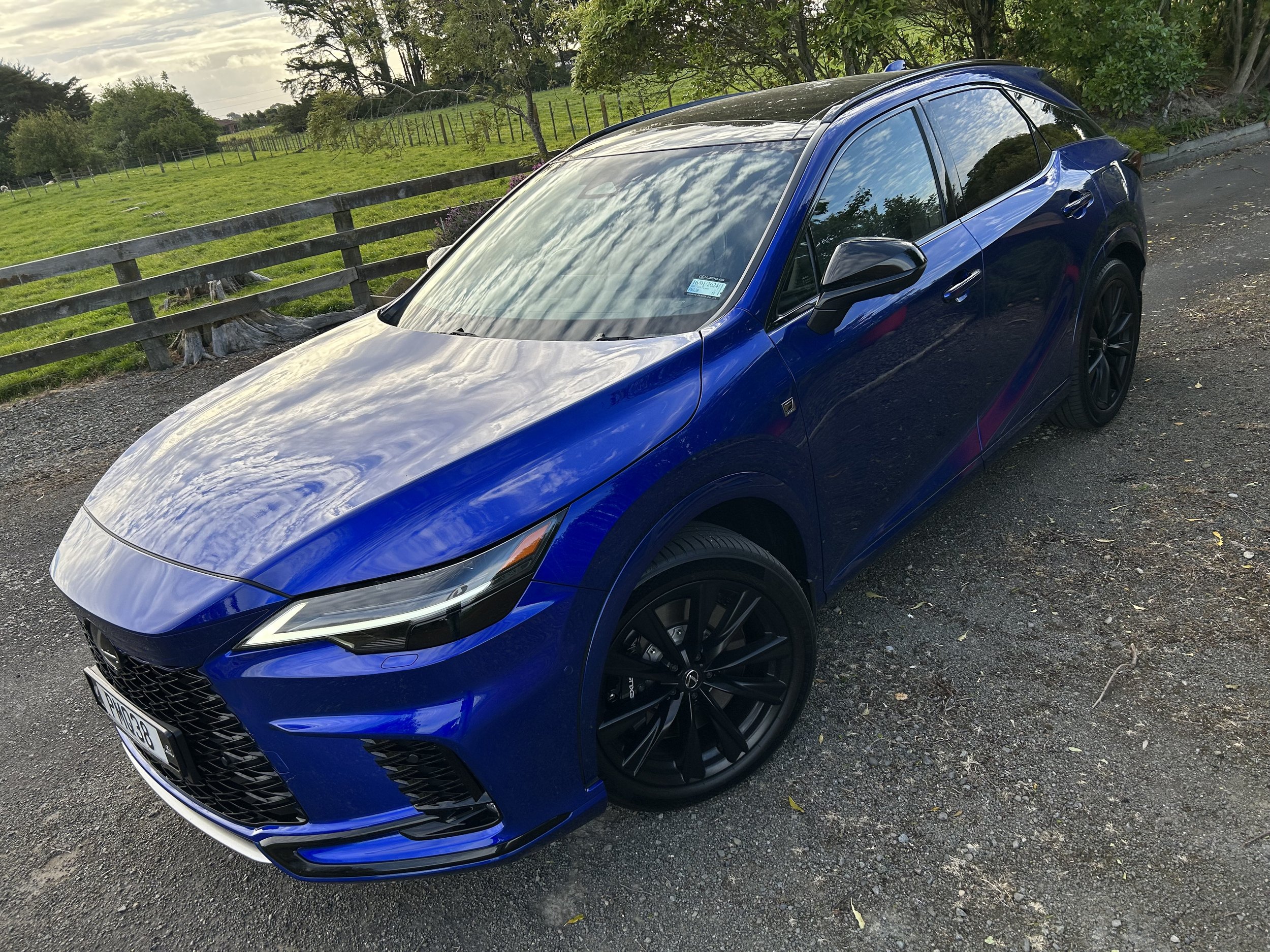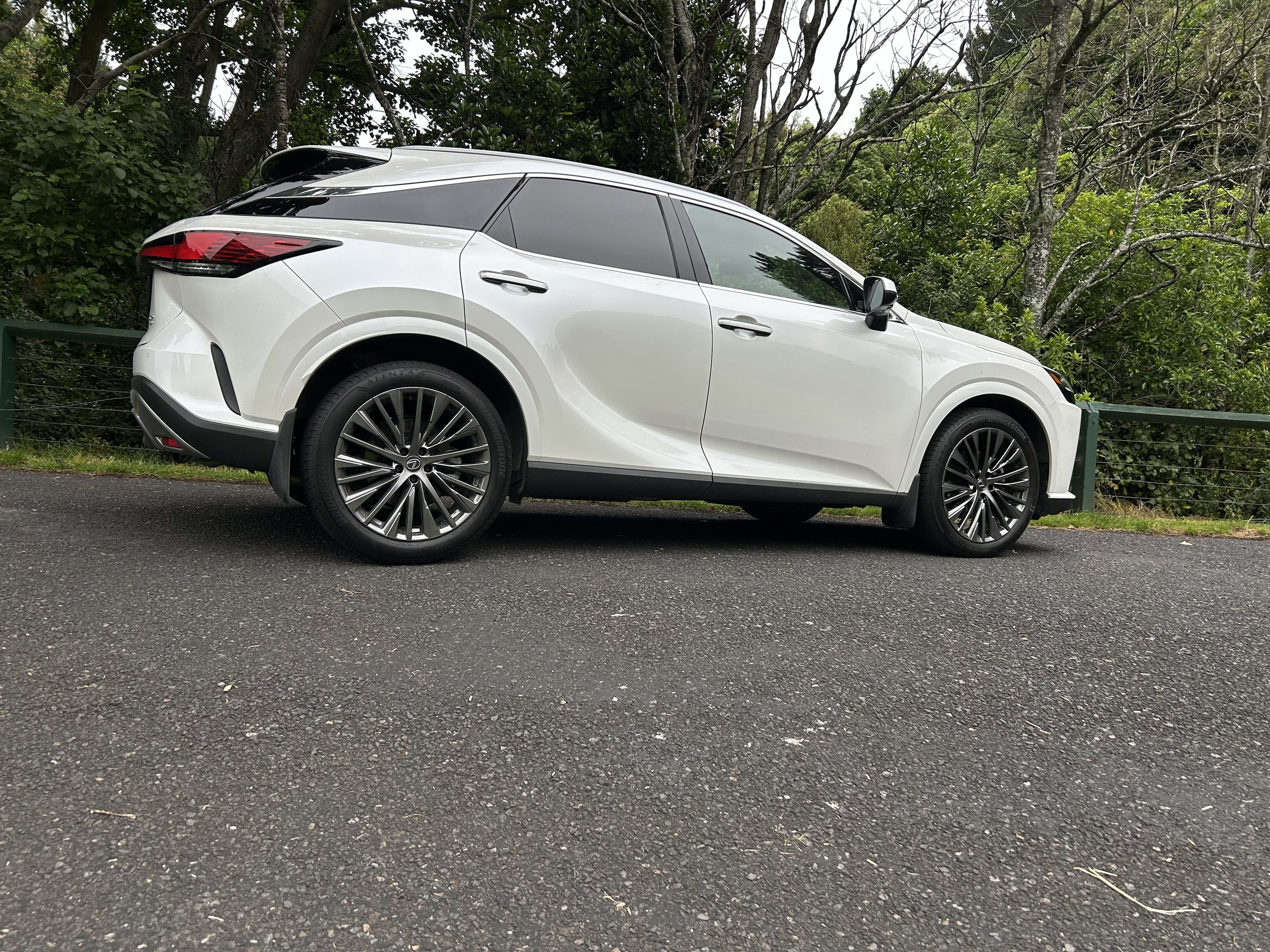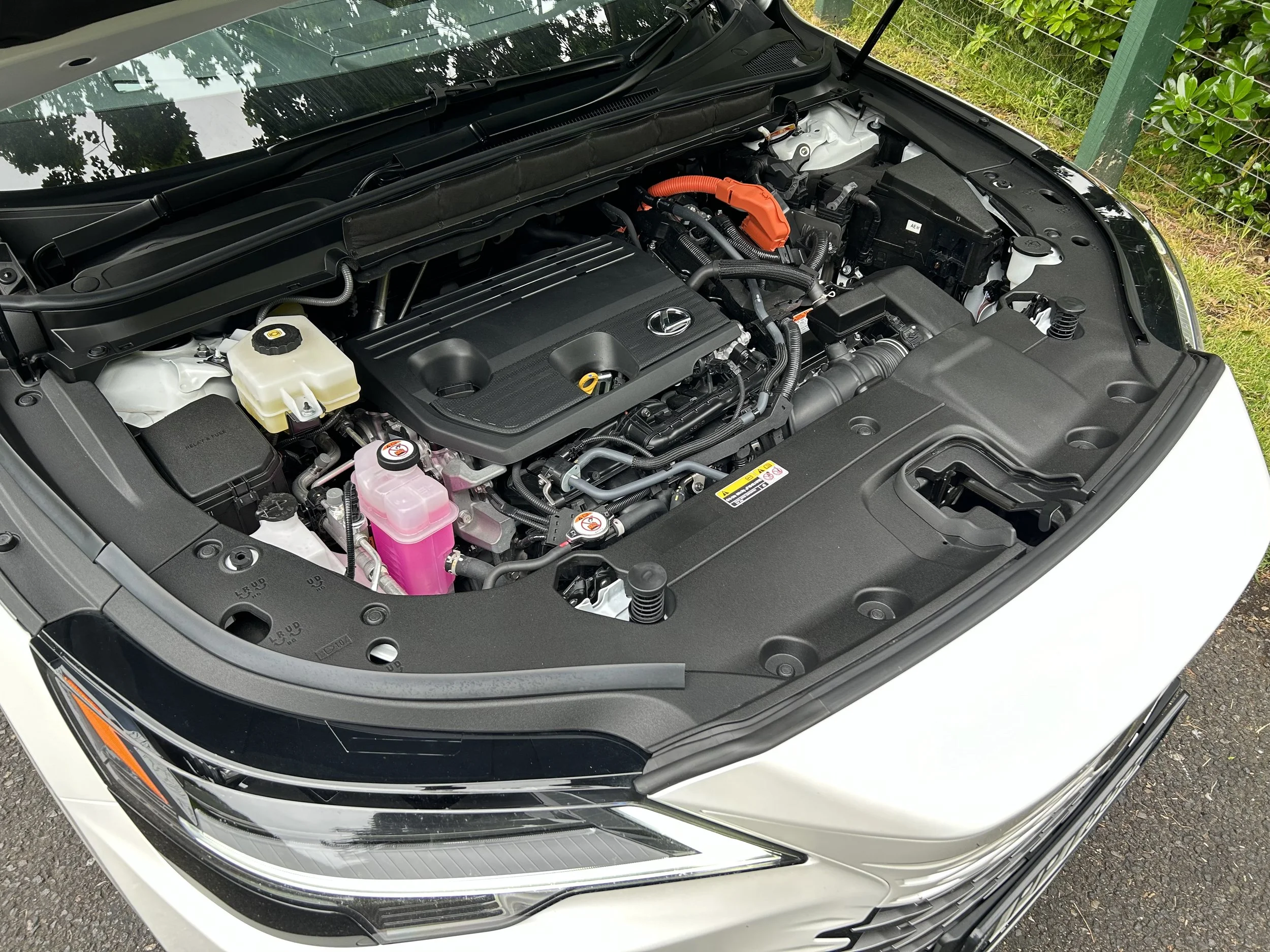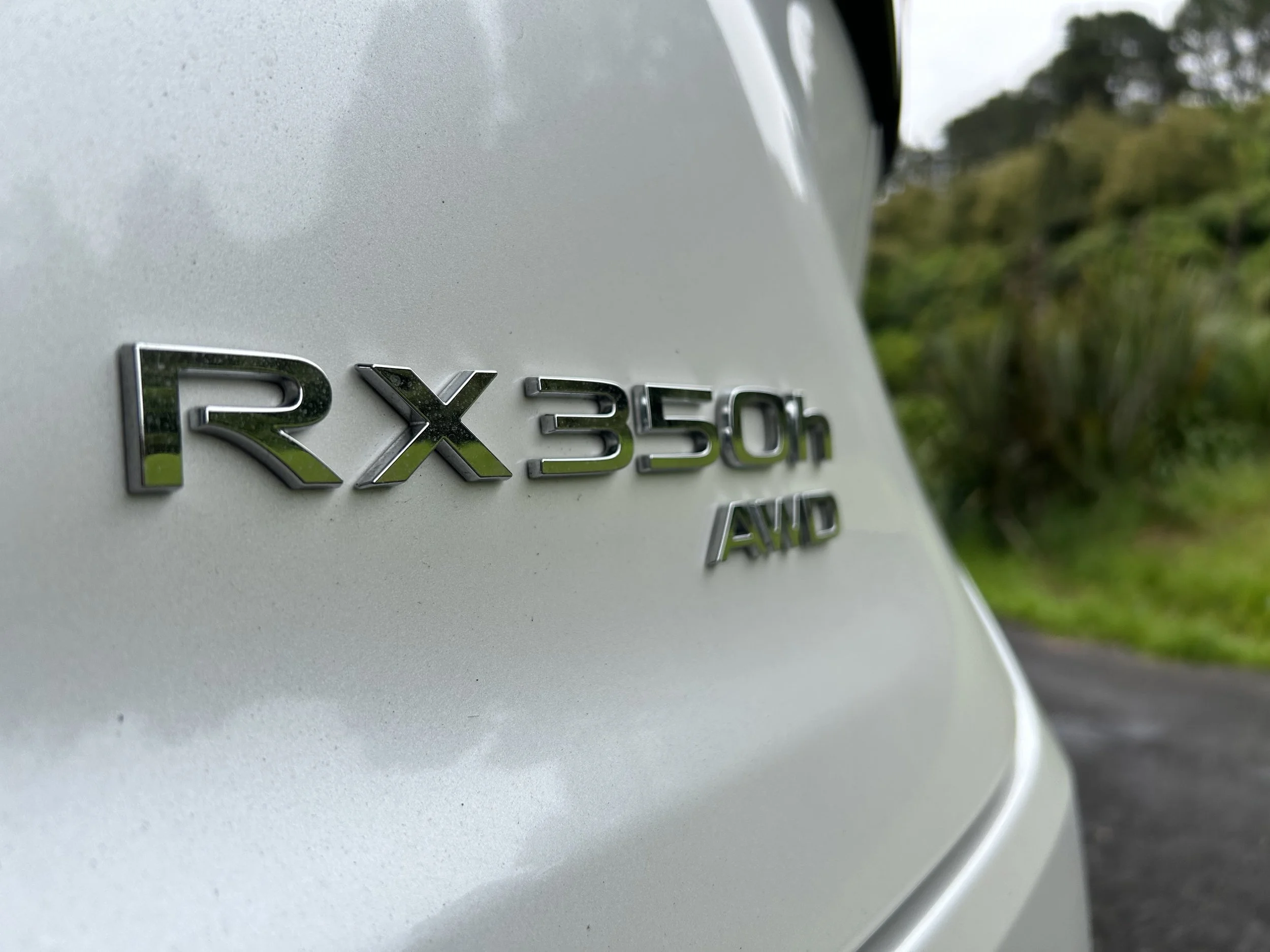Lexus RX 350h/500h: Sharper and sweeter
/The volume seller has been updated with improvements in key areas.
Prices: 350h Premium $124,600; 500h F Sport $149,800.
Powertrains: 2.5-litre hybrid inline four, e-CVT, 184kW/239Nm; 2.4-litre turbocharged hybrid inline four, six-speed auto, 272kW/460Nm.
How big: 4890mm long, 1920mm wide, 1695mm high, 2850mm wheelbase.
We like: Improved interfaces; efficient hybrid powertrains; 300h ride and refinement.
Not so much: CVT match less appealing than pukka auto; low tow rating; no seven seat.
FIFTY-three dollars per 1000 kilometres: That’s enough to tip plug-in hybrids out of a sweet zone and into the sour.
Or at least, so some within ownership circles are starting to lament having considered implication of this technology being drawn into paying Road User Charges.
An involvement that impacts on April 1 was an inevitability, albeit one the longest time coming.
RUCs on battery-wed product was first proposed in 2009, but deferred several times since, primarily to enable electric cars to gain reasonable foothold, latterly because of covid. Last year sales of mains-replenished electric involved product reached that tipping point of two percent of the national fleet. Welcome to the real world.
In the now, just those petrol-electrics that mains-replenish are affected. To point, some owners fear, where they will become unsealable lemons. Over-reaction? Time will tell and the market will dictate.
In hindsight, Lexus might feel as though it dodged this issue with its most important model, the RX. One important change for this medium-large luxury SUV was that it now builds in plug-in, as well as mild, hybrid forms, the first as a direct replacement for the 3.5-litre V6 that has now retired. Lexus NZ decided only to take the mild - that is, non-mains replenished - hybrids.
Portentous, in hindsight.
Of course, in the long term, Government intention is to apply RUCs on all light vehicles, so all mild hybrids - which classify as petrol cars - will be pulled in.
If this happens, will these pay the same as petrols? Will petrols pay more, the same or less than PHEVs? A system that is fairly controversial now stands to become all the moreso.
Fuel is also taxed and that’s the reason why some PHEV owners are peeved. With RUC on top, they’re being double-whammied.
Inevitably, the whole matter simply brings the spotlight back onto a truth that has been evident since the first commercially-pitched hybrid, the original Prius, was pitched in 1997. Simply, while a stepping stone between petrol and electric, hybrids of any kind are and, always have to be, a compromise and still inherently fossil fuel reliant. Hybrids of any kind aren’t going anywhere unless there is fuel in the tank.
The optimal sweet spot, then, isn’t so much to have a petrol that can occasionally be electric so much as have a car in which both elements work optimally, to result in lower fuel burn and CO2 than can be expected by a fully ICE car. It’s just how they’re engineered to work.
Still, the RUC element will demand a whole lot of fresh number-crunching to determine if ownership benefits still stack up. On top of this, those who have already committed seem to be wondering if their choices have become sales-proof lemons. I’m guessing the market will decide the latter. Interesting times.
Those who see hybrids more for what they actually are, rather than as they perceive them to be, might still see value from what they have to offer.
After all, the basic promises are as they ever were. All the benefits of a combustion engine, fewer drawbacks, in that economy is almost always better than from a pure ICE and the environmental impact is lower, not just from better economy but also lower emissions.
Those plus point were delivered by the Lexus RX hybrids on test here, with another pleasing attribute also delivered.
Toyota’s premier division marque has aways aced refinement, but in these RX models it reaches astounding level.
The old ones were generally brilliant at suppressing extraneous sound, but these newest types are surely the quietest of the quiet types.
That this goes as much for the RX 500h F Sport as it does the RX 350h Premium says much about the effort Lexus puts into making the posh experience properly that.
Despite being common in basis and common in delivering with a hybrid four-cylinder, with all-wheel drive, and significant plushness, they are very different choices, aimed at different buyers, to point where they sit at opposing ends of the pricing platter.
The Premium, in white, is very much a car dedicated to regal procession. It marries a 2.5-litre hybrid engine to an electronic CVT transmission; 0-100kmh isn’t bad at 7.9 seconds, but it’s more into thrift and clean living: So a claimed six litres per 100km economy and 137 grams per kilometre emissions.
The F-Sport is something of an alter ego. It takes a 2.4-litre engine, also four-cylinder, but turbocharged, which weds to something no too common in hybrids; an actual automatic transmission, with cogs and six speeds.
It has 89kW more power and 221Nm more torque; making it the most powerful Lexus hybrid on sale. The 0-100kmh time is sharper, at 6.2 seconds. Fuel burn climbs, but not hugely: The optimal 7.2L/100kms claimed is almost small car stuff in pure ICE circles. CO2 output is up by 28g/km, but it’s hardly being smutty.
The RX has been a Lexus staple since the early 2000s, when it first came out with a non-hybrid V6 and was one of the first cars to be made available with a touchscreen infotainment system. Nowadays Lexus volume here is very much centred on this sports utility.
Few Lexus cars are completely separate from Toyota. The RX certainly isn’t, in that it used the same architecture that underpins the RAV4 and Camry.
Yet that sharing is very well disguised, all the moreso with the latest, fifth generation line, which delivers as a big improvement of the previous product.
The car now is certainly more than a styling refresh of what we had this time last year. RX has now adopted the Toyota New Global Architecture K platform (except, for Lexus’s purposes, it has dropped the TN to leave just GA-K). That allows for upsizing, not least in the wheelbase.
What’s intriguing about the car going large is that, in addition to adopting a fresh body styling and lots of additional technology, it drops the seven-seater option over the standard five chair format. Whether a third row could easily accomodate in what is now a larger boot is questionable; but fact is that the market likes seven seaters - less as a ‘just in case’ there’s a day junior’s mates need a ride home and more for resale.
That change arrived with price hikes. The cheapest of four new models - the test cars book-ending a 350h Limited and a 350h Limited Enhancement - is $7k cheaper than the dearest edition in the previous family. the old line also started with a $97,500 edition. Everything’s six figure, now.
The car’s restyling is evolutionary, yet extensive nonetheless. It arguably leaves it looking more expensive and, if not wholly appealing (there’s something of a North American brusqueness to the front end) it is undoubtedly more eye-catching.
Lexus’s designers were apparently encouraged to rethink the ‘spindle grille’ in favour of a ‘spindle body’. They haven’t. Instead, they’ve just made the grille even bigger and more accentuated. It still not the the most confrontational Lexus - that’s the LX - but this is a signature you will either like or steer well clear of.
There are plenty of other familiar RX styling cues, of course, especially around the C-pillar, but the angular origami-like bodywork creases of recent Lexus models mellow and soften here.
Does the F-Sport enhancement add or detract? That question was bandied a LOT during the test period. So much goes into ensuring the top derivative expresses more strongly than the entry type, from special wheels to body cladding. But the strident metallic blue of the test example on its own was probably enough to fuel strong opinion.
The LED headlights are similar in appearance to those on the NX but have what is claimed to be world-first world-first ‘Bladescan’ technology; a fancy pants usage of a pair of blade-shaped mirrors that rotate at high speed to vary the shape and depth of the light beam. The lights are great and, since no-one flashed at me, they cannot be too confrontational.
The rear light units are linked by a slim light bar, above which is the Lexus wordmark instead of the badge.
The interior is always where Lexus does its best work. You can always expect a cabin that is impeccably pieced together and rich with supple and clean materials. This RX also gets ahead of its kin ergonomically, too.
One big victory is the type having finally divested the hopelessly pointless ‘trackpad’ that has blighted many a Lexus. I always said it needed to be binned. Finally, they’ve done it.
In front of the driver is a relatively small seven-inch digital instrument panel within the main display using fairly plain graphics and goes lite on information - probably for good; it’s easy to become distracted by these things. Above that is a head-up display.
The opus electronic interface is a 14-inch screen in the centre of the dash, driven by Lexus’ latest software. again, that’s reason for celebration as, while not entirely foible-free, is overall a massive improvement over what used to be found. There's good Apple CarPlay and Android Auto connectivity too, and plenty of USB sockets so you're very well looked after in tech terms.
Below the screen reside heating and ventilation controls - with the neat touches of little round screens in the air con dials showing temperature. Everything is touch-sensitive but logical to use.
I wish I could say the same about the HUD, but the usefulness of this is vexed by the controls being on the steering wheel. These tactile feedback plus it can be confusing to work out how to alter not just what info you want to see, but how you want to see it. And at the right height.
Below the central display is a small storage area, with more space under a sliding lid. On the centre console there's the stubby drive selector alongside which are two cupholders and the buttons for the electronic parking brake and the car's driving functions.
Under your elbow is a large armrest that's hinged on both sides, so that either the driver or the front-seat passenger can access whatever's in there.
Even though the 350h is effectively a base model, that descriptive holds no meaning in Lexus language. Think of these derivatives as respectively being luxurious and more luxurious. Soft leather occasions and, though there are one or two cheap plastics and the 350h irks a bit in lacking the wireless device charger meted the dearer choice, the overall impression is that you’re getting a pretty decent setting. Spend the most, of course, and ultimately you get more.
The 500h has a stronger swath of finishing touches, including more complete seat adjustments - and on a hot day you’ll appreciate the more breathable leather seat faces and fan-cooling for driver and front passenger. It definitely has the better audio - that 21-speaker Mark Levinson package is stunning in its quality. In isolation, though, you will think the 350h’s 12-speaker Panasonic is fairly good. But the order of test meant the 500h came first. And once you’ve heard the best …
While the electronic interfaces are well sorted at last, there is one quirk with the door handles. There are conventional pull-handles, but these are designed for emergency use. What Lexus wants you to do is something that feels counter-intuitive; to ‘push’ the handle. This electronically pops the lock and allows you to open the door. Lexus' theory is that it turns opening the door into one smooth, consistent movement. I don’t disagree, but also contend that when you see a handle, it’s hard to not feel compulsion to counter-act their hope.
Opening from the outside is also different in that the latch handle doesn’t move as you pull on it; it’s just an electric button hidden behind a handle. Again, any benefit escapes us.
Rear seat room is okay; not limo level but delivering head, leg and knee room good enough for most occupants. Those with big feet might wish for more space under the front seats. Rear seat passengers get air conditioning controls and USB sockets.
Had we seen the PHEV, there’d likely be complaints about how much boot space the big battery takes up - around 200 litres’ worth. Not a problem with the mild hybrid hardware. It doesn’t intrude at all, so there’s 612 litres with the rear seats up, lifting to 1678 when they are stowed. That’s going to be appreciated by families, but you need be aware there is a concession that’s becoming more commonplace. The RX is another new choice that has a puncture repair kit instead of a space-saver or full-size spare.
RX takes a litany of safety and driver-assistance features including AEB with pedestrian, cyclist, and junction detection, blind-spot monitoring with intervention, rear cross-traffic alert, reverse AEB, and more. The implementation seems less prone to relate well-meant but over-zealous warnings about railway crossings, now. This is a five star ANCAP scorer. What impresses in daily use is that it has highly effective driver monitoring similar to Subaru’s camera-based system and clever 360-degree manoeuvring cameras that can display a transparent bird's eye image of the vehicle.
You’d imagine that losing the six-cylinder and going fully to four-pots would cost in refinement. It might in some other fare. But this is a Lexus. Bad sounds are banished.
Thus, while it’s true that 500h is the smoother and more aurally-rich car (albeit its ultimately not an especially emotive note), and that the 300h has to heft the 'traditional' hybrid issue of revving when you put your foot hard down and the CVT gearbox rushes to play along, not even the noises that occur then infiltrate so massively as to become really annoying. Again, these are remarkably refined cars.
Anyone with strong F-Sport hankering might well find the 300h’s powertrain a little too diluted for their taste; but that’s why there are sports and more sensible choices.
The latter is decent in isolation; not as brisk as the 500h, yet there’s sufficient torque from the electric motors, and sufficient energy out of the battery assist, for it to go about its business with its head held high.
Though not a car you’d describe as particularly fast, it hums along very pleasantly. The real draw, though, it how lean it can become; on a four-hour open road drive, it leaned right out, ultimately showing 6.5 litres per 100km. Yes, I know the maker says it can do better still, but for a vehicle of this size and substance, even my result would surely satisfy many.
In terms of how each RX traces the roadscape, it’s clear the 500h is not just the one that is more alert to speed change opportunities, but is also much keener in cornering. The trade-off is that it is also firmer, and the ride is less polished than in the 300h.
Overall, though, the sum impression from both types is that this RX is a step up from the last.
It's hardly a small car, and not exactly light, but it feels far lighter on its toes than I recall the old ones being.
That doesn't translate through to an especially sporty driving experience in the 300h - you need to go to the 500h to get a sense of the fuller degree of dynamic feel, because that one has the added enhancement of four-wheel steering, and Lexus’ clever Direct4 AWD e-Axle system – helping minimise unwanted pitch and acts as a torque vectoring system when you’re getting all gung-ho. Go hard enough into a bend and you can feel it adjusting and managing.
Whether it’s enough to warrant going to F-Sport will be moot; the market showing predilection for performance models justifies it being here, but you’d have to imagine most buyers will consider it a show pony, and drive it as they would the base car. In which case just the trade-off in ride over going to larger rims than the base car’s 19s might challenge.
Still, both demonstrate all the right attributes to be considered good, long-distance, open road pace cars. In town, the RX feels okay, too; go slow enough and you will find it has regressed to fully zero-emissions running. The electric edge delivers differently on the open road, of course; but you always sense it is doing something. Which is par for the course. Lexus and Toyota are, of course, the hybrid masters. No other brand makes an electric-assisted petrol powertrain that operates as effectively.
If you’re one for towing, be aware the 500h has a two tonne maximum and the 300h is rated for 1500kg tops; not exactly the calibre that win them accolade with the giant caravan/boat brigade.
Last year was the best yet for Lexus sales, but it hardly broke out; sales generally hover around the 2000 units mark, which means it is a bit niche. Mainly European SUVs are often favoured in this category and now they’re offering in fully electric as well as the traditional ICE presentation. The hybrid choice sitting between the two seems too strong for some, too little for others. A shame, in a way, because in many ways the RX now for the first time feels fully just right.



